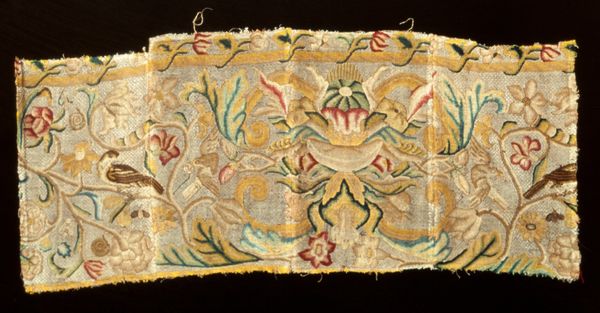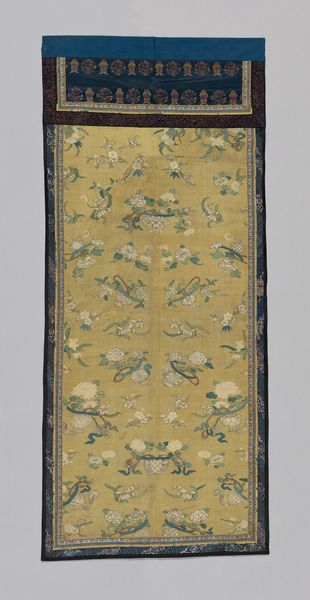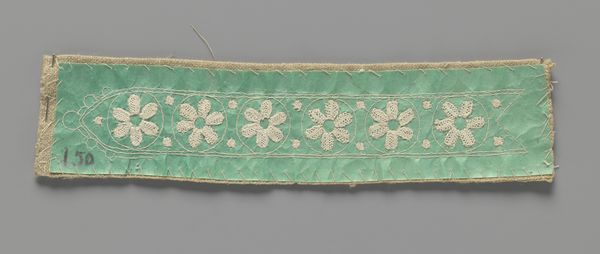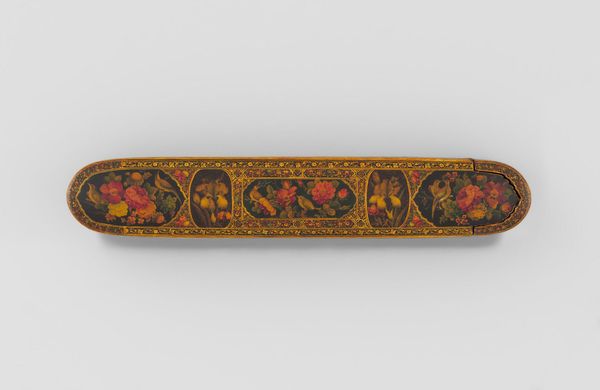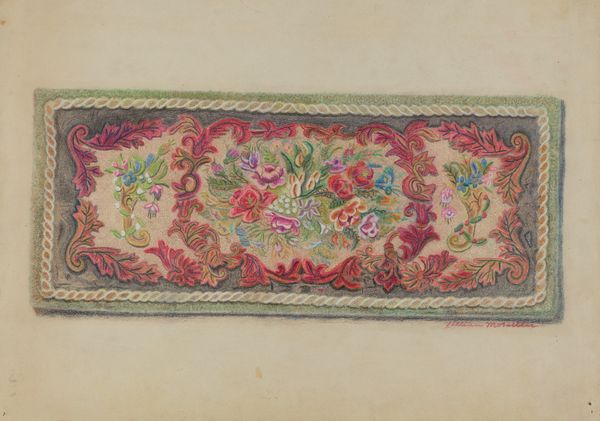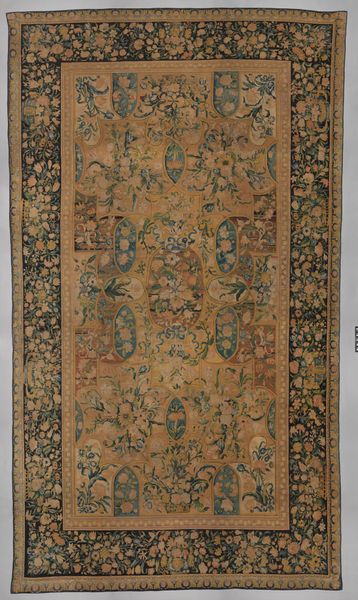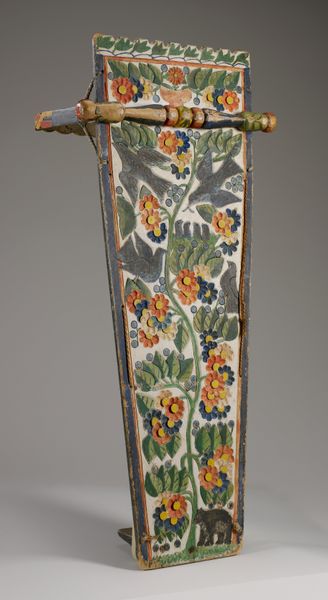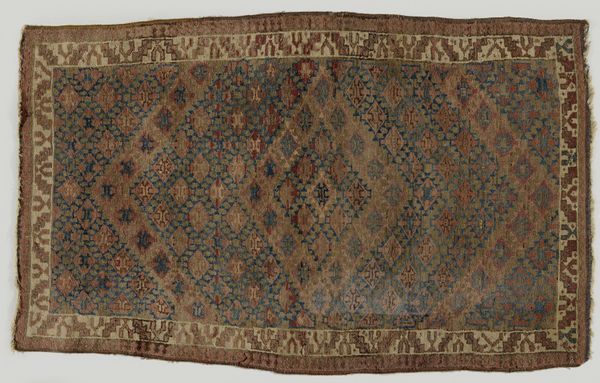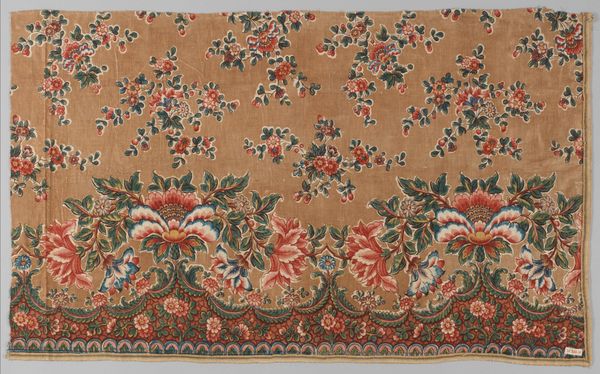
textile
#
medieval
#
textile
#
folk-art
#
decorative-art
Dimensions: 12 ft. 1 in. × 7 1/2 in. (368.3 × 19.1 cm)
Copyright: Public Domain
Curator: This is a Torah binder, created sometime between 1610 and 1620. It's a beautiful example of textile folk art, currently housed at the Metropolitan Museum of Art. Editor: The piece really exudes warmth. The aged colors—mostly golds and reds—feel comforting, familiar almost. Is it the decorative pattern and shape or something else? Curator: Torah binders such as this served a very practical purpose—they're used to wrap and protect the Torah scrolls. But beyond that, they become powerful objects imbued with meaning related to childhood, family and communal identity. This particular one might represent the hopes and dreams of the community, stitched in thread. Editor: That's fascinating! You know, looking closer, I'm seeing the continuity of imagery. There seem to be repeating floral motifs alongside Hebrew inscriptions. Could these repeated forms have functioned as mnemonic devices, reinforcing stories or teachings through visual cues? Curator: Absolutely! In fact, textile arts provided one of the few spaces available to women where they could both record the history of their families and communities, but also leave a legacy and show artistry within constraints created by patriarchal systems. Editor: So, even something that seems like "mere decoration" is really charged. Were these binders also used for other purposes, perhaps as ceremonial objects in rituals related to a child's birth or education? I see this Torah binder speaking volumes. Curator: Very insightful, indeed. Binders are created using remnants from swaddling cloths after a circumcision and embroidered with prayers, and good wishes for the new child, connecting one generation to the next in the transmission of shared spiritual tradition and cultural values. This piece exemplifies continuity through artistic forms—passing on customs that are rooted in tradition and memory. Editor: A beautiful intersection of the functional and the symbolic, then. A material object imbued with hopes, memories, and a shared identity that persists. Curator: Indeed, a compelling reminder of the complex tapestry of human experience that folk art encapsulates.
Comments
No comments
Be the first to comment and join the conversation on the ultimate creative platform.
